Seconded By: Britta Jaschinski,
In the recent 40 years, China amazed the whole world with its rapid industrialization and urbanization. For economic development, China misused the nature as a raw material stock, seeking for everything required freely without limitation, regardless of the broken balance between man and nature. The trap co-plotted by capital and power eventually brought about equally “amazing” consequences.
“Scars” focuses on enormous man-made landscapes: mine, quarry, removing mountain for land, waste hill, fish scale pit, open mine pit, reclaiming land from sea, sand fixing in desert…The massive projects reduced the land surface into scars in the texture of the earth, standing out abruptly in the environment. That is how the serial works were named.
For the enormous scars, I composed “huge images” with 1 billion, 2 billion, or even billions of pixels, fully demonstrating all the details of the massive landscapes. In the contrast between the huge and the minimal, we may reflect on the relationship between man and land, environment.
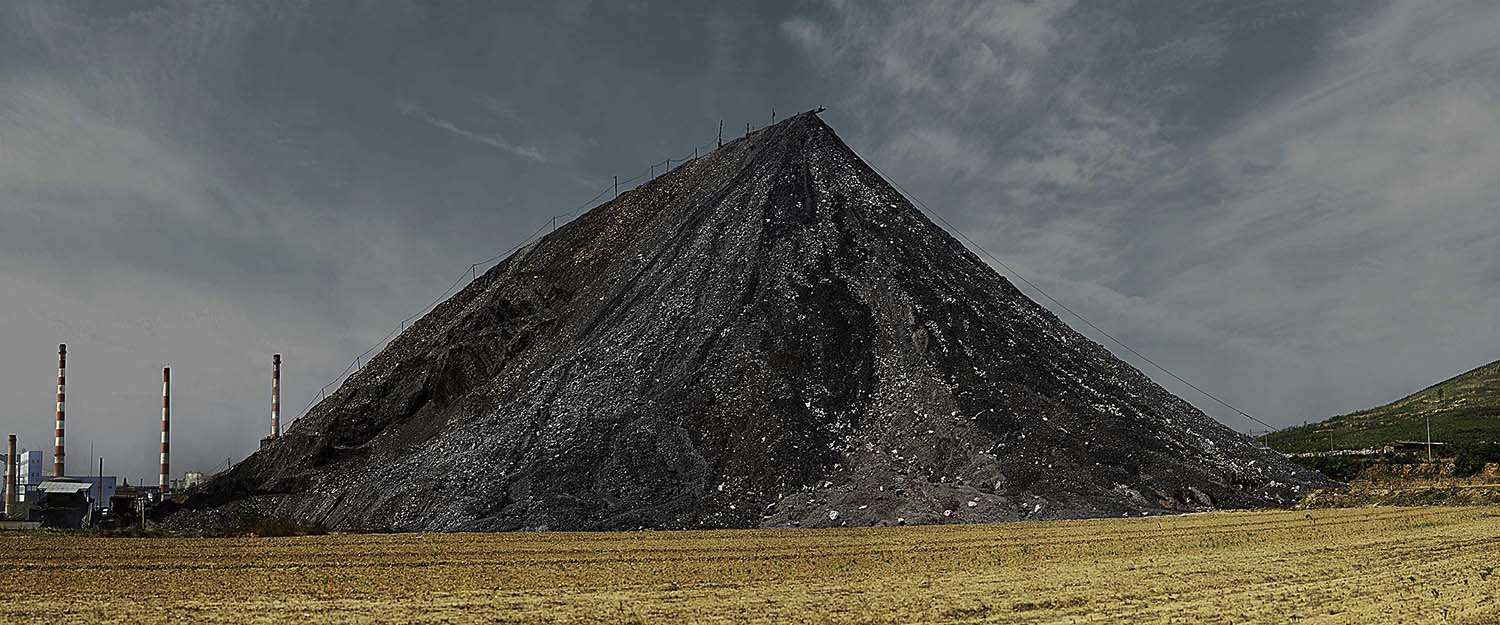
Scar-Waste Hill
Scar-Waste Hill, Pingdingshan, Henan,China
Gangue is a kind of solid waste derived from mining and coal washing, and a kind of blackish gray rock with lower carbon content, which is harder than coal and formed together with coal bed. Waste hill accumulates gangues discharged and disposed for years. The abandoned gangues cover up large areas. Sulfide from gangue may pollute the air, farmland and water body. Waste hill may burn by itself, or collapse in rain season, or block rivers and cause flood. Over 1 billion tons of gangues have been accumulated in China, and 100 million tons will be produced each year. From late 1990s, Chinese Government began to emphasize the treatment and utilization of gangues.
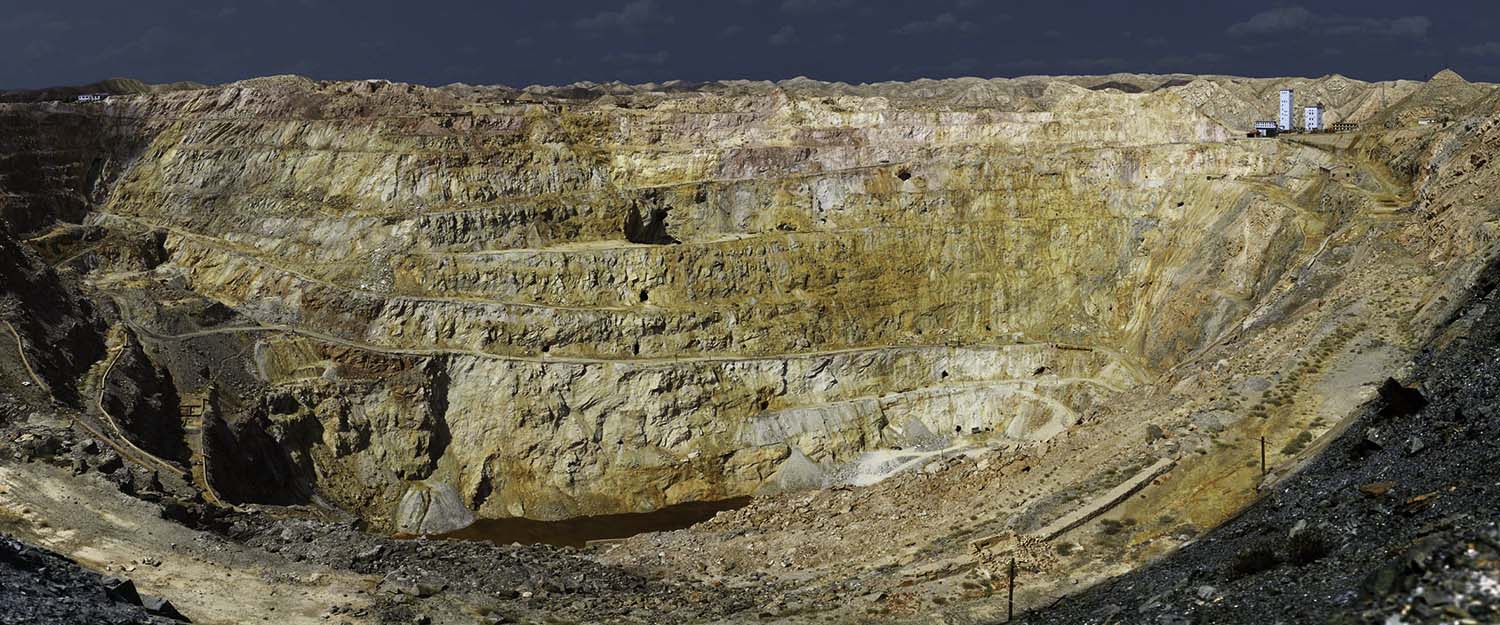
Scar-Discarded Open Copper Mine
Discarded Open Copper Mine, Baiyin, Gansu,China
Open mine is exploited by removing dusts and rocks above and surrounding ore body, transporting waste rocks to disposal site, and directly mining on the exposed body. When ore body is buried shallow or can be seen on surface, open mining is better than underground operation. However, open mining needs to remove rocks and dusts, and dump a large quantity of rocks, so it usually covers more farmlands, especially those buried in relatively greater depth.
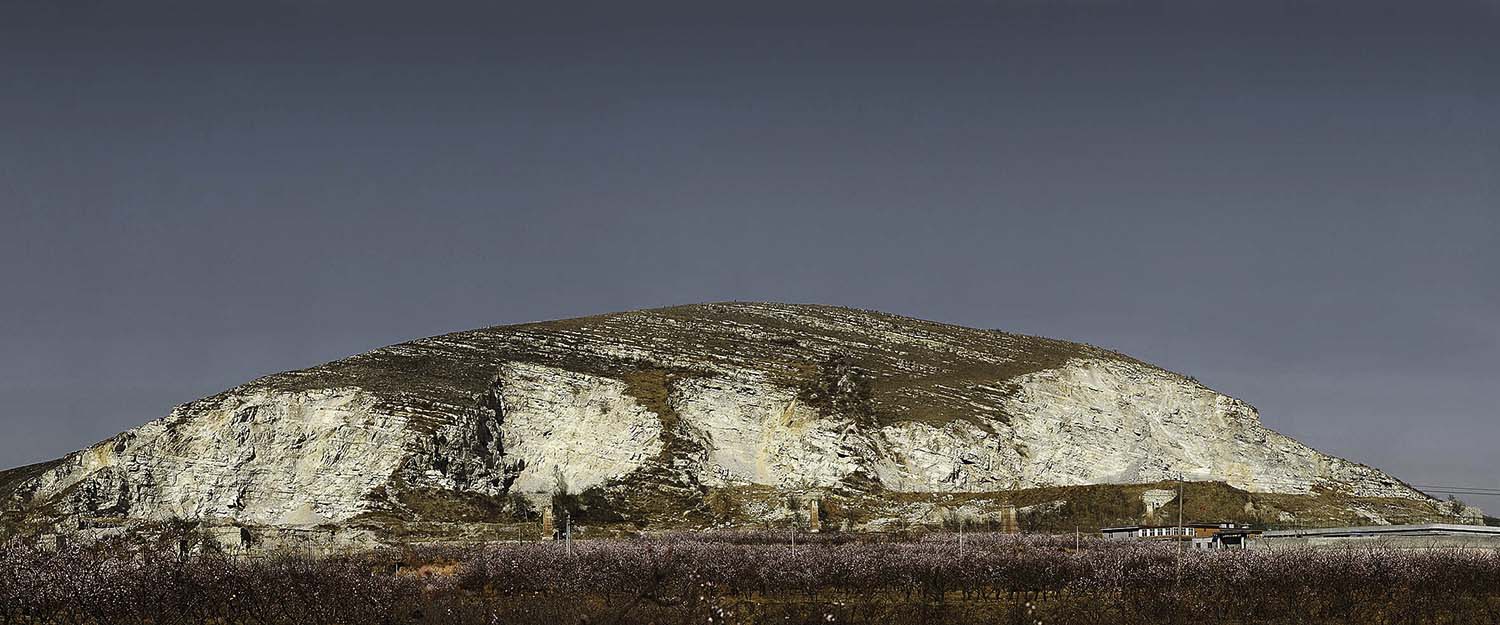
Scar-Quarry
Scar-Quarry, Shunping, Hebei, China
Construction projects in cities and towns need large amount of sands and gravels. Some units, village committees and villager’s team with access to construction materials set up many quarries in Shunping and Mancheng, Hebei Province. Quarries brought about man-made and natural damages to ecosystem. Both led to a series of serious ecological and environmental problems, as damaged vegetation, bare land, soil and water loss, deteriorated ecological environment and reduced natural landscape.
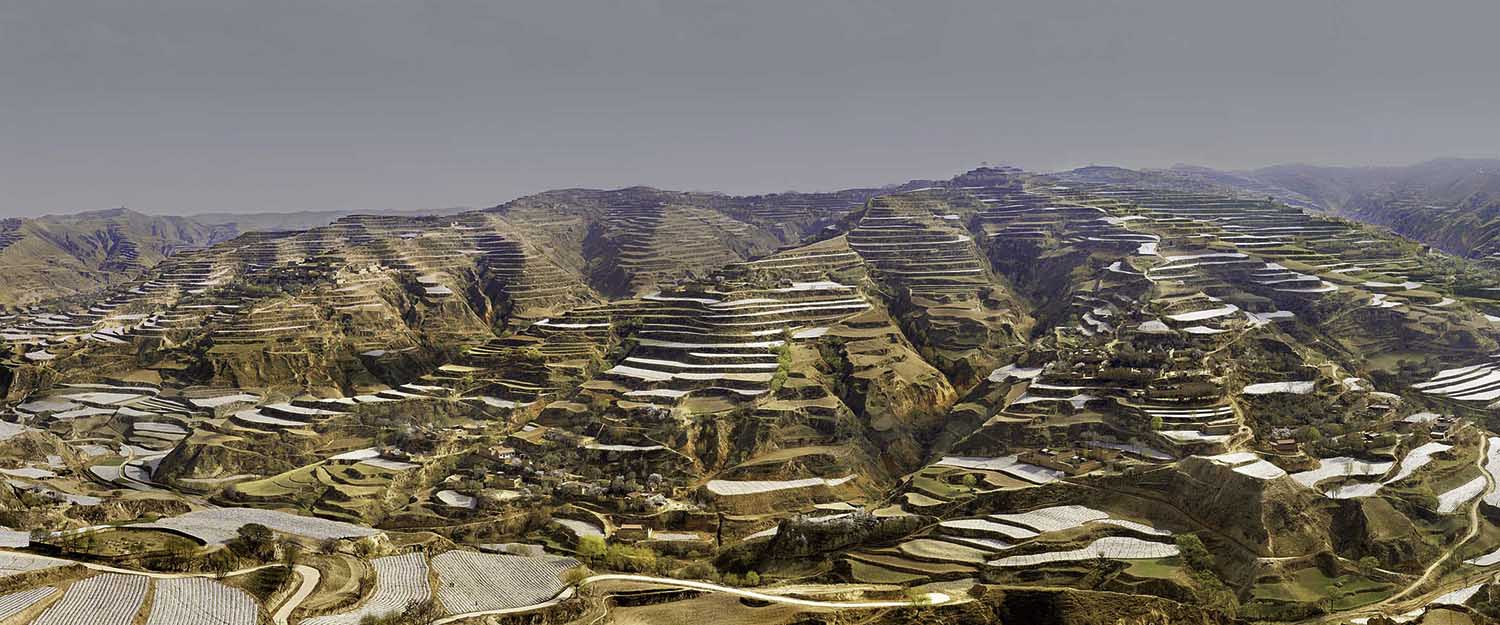
Scar-Terrace field
Terrace field, Dingxi, Gansu, China
Terrace field first appeared in Qin and Han Dynasty in China. Rice field requires water. But the southeast provinces are dominated by hilly area instead of plain suitable for growing rice. To solve the food problem, farmers built terrace field, and conserved water with dams. Thus rice could be grown in the hilly area extensively, and food problem was solved. However, terrace field requires more labor force that the plain area does. Despite that, no extra yield can be produced, and vegetation in hilly area can be seriously damaged. Therefore, terrace field is gradually eliminated, with some being conserved as a resource for tourism.
The terrace fields I shot are built in “Learning from Dazhai Campaign” in 1960s and fundamental farmland construction campaign. As the “Learning from Dazhai Campaign” was concluded and the “Grain for Green” policy was implemented at the beginning of the century, most of the terrace fields were no longer used. In the same period, terrace field projects were carried out in a few counties and cities in Gansu Province. Does terrace field damage vegetation or conserve water and soil? Is terrace field build for agriculture or for GDP?
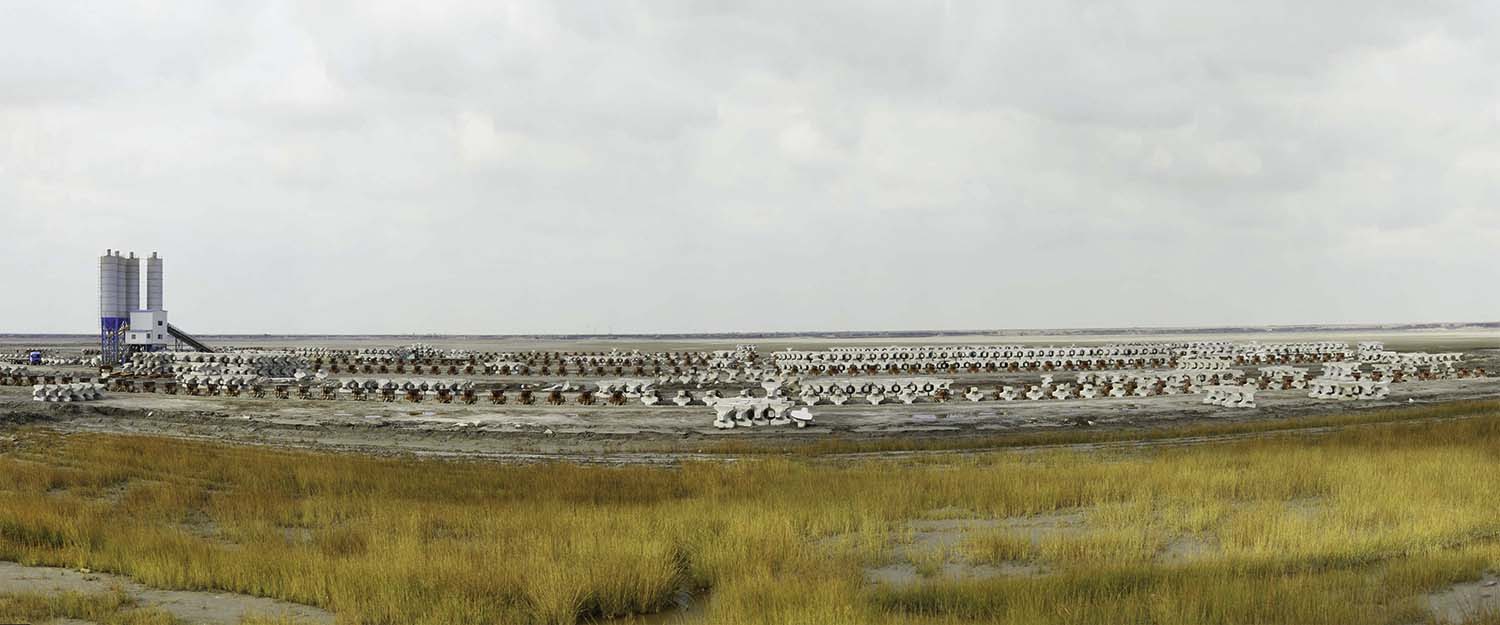
Scar-Reclaiming Land from Sea
Reclaiming Land from Sea, Nantong, Jiangsu, China
Reclaiming land from sea, also known as filling sea for land, filling sea, or reclaiming land, refers to the process of expanding offshore land, island, or even reef with earth, rock, construction wastes, etc. Reclaiming land from sea is a traditional practice in China. As early as 2,000 years ago in Han Dynasty, our ancestors filled the sea to expand land for the increasing population. In the 21st century, the practice was carried out at a speed several times of the past, reclaiming over 100 km2 per year. Currently, Chinese Government is strengthening management over the sea. For reclamation over 50 ha, approval from the State Council must be obtained; for reclamation below 50 ha, approval from the provincial government must be obtained. Municipal and county-level governments are not entitled to approve reclamation project.
Fill sea for land may produce some short-term benefits. But in the long run, it may bring ecological catastrophes: First, lost wetland and deteriorated drought; Second, reduced bio-diversity and resources of fishery; Third, flood; Fourth, damaged habitats for dolphin, manatee and migrant bird, as beach and wetland being undermined by rubble; Fifth, shrinking estuary, which may lead to sea water encroachment or flood; Sixth, reclaimed land being developed instead of farmed.
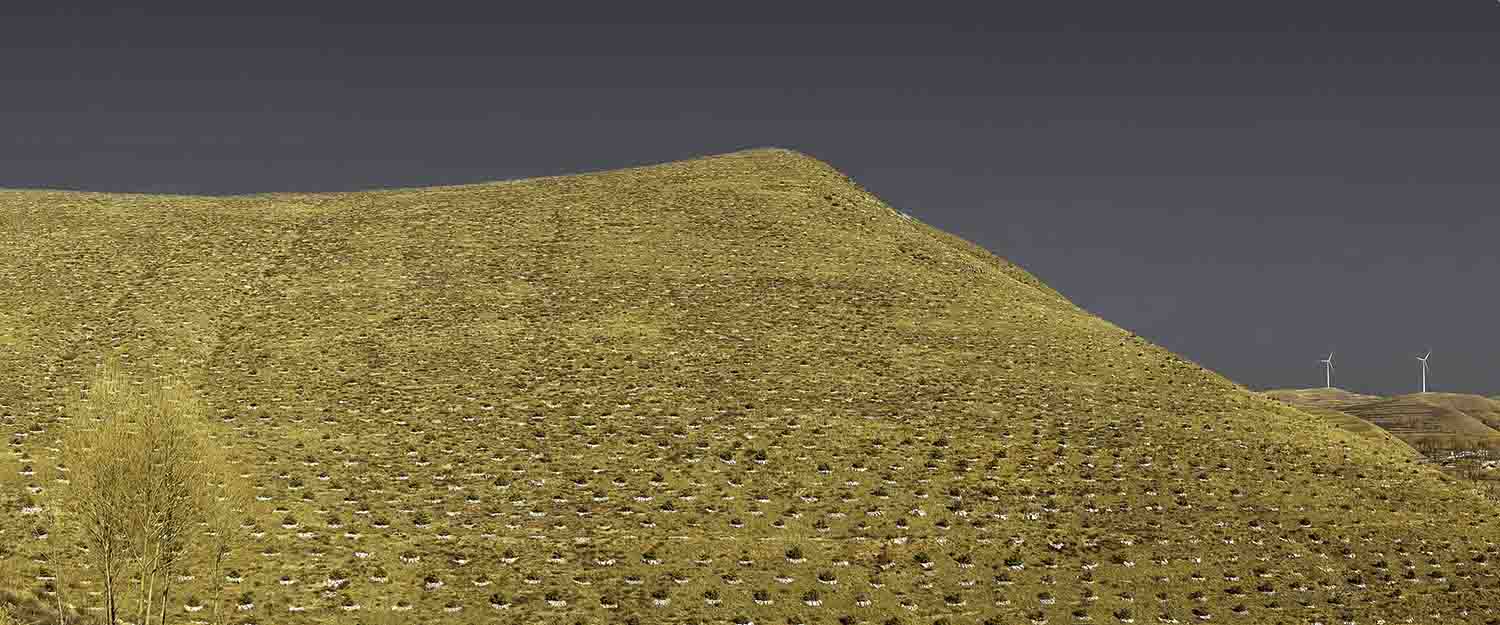
Scar-Fish Scale Pit
Fish Scale Pit, Shuozhou, Shanxi, China
Fish scale pit is a method adopted by the Loess Plateau, to conserve water and soil, plant forest and reclaim land. Semi-circular pits were dug from top downward along the contour on steep slope and broken valley slope, and ranging in triangular pattern. Looking like fish scales, they were named as fish scale pit. It stores water, so planting trees in it can conserve soil, water and nutrient.
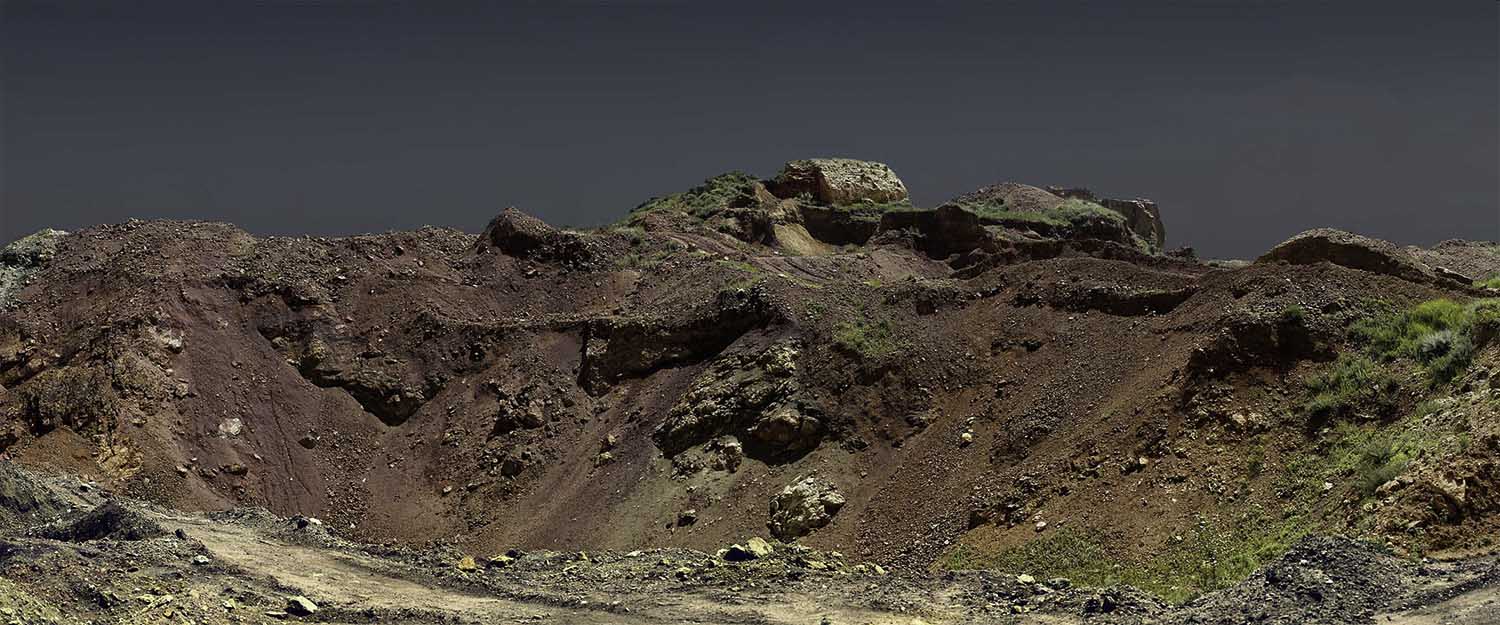
Scar-Bauxite Mine at the Foot of the Great Wall
Bauxite Mine at the Foot of the Great Wall, Shenchi, Shanxi, China
The Great Wall surrounded by bauxite mine is the relics of Ming’s Great Wall, one of the key cultural relics in Shanxi Province confirmed on August 18th, 1986. Now extensive exploitation has seriously damaged the Great Wall. A couple of years ago, the mining was called off. However, a couple of months ago, new sign of mine was again set up nearby.
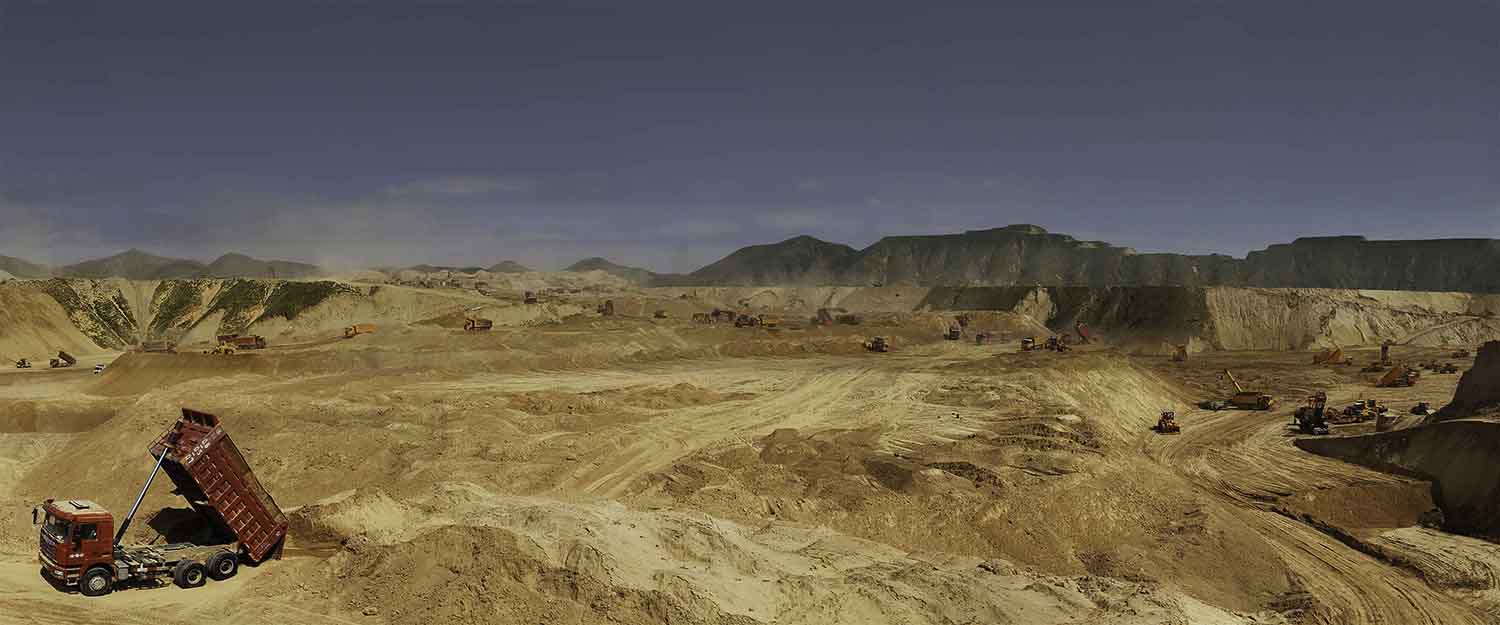
Scar-Removing Mountain for City I
Removing Mountain for City I, Lanzhou, Gansu, China
Lanzhou is in more urgent need for land that any other city. The “removing mountain for city” reflects the new round of urbanization in China. Nationwide, Lanzhou is not the first city carried out the operation, but it is indeed the most ambitious one. The Overall Plan for Comprehensive Development of Undeveloped Lands in Lanzhou covers 258 km2. The current project is only a small part of the plan. According to the plan published by the constructor–China Pacific Corporation Group, they will remove over 700 mountains in 25 km2. The contemporary version of “The Old Foolish Removes the Mountain” aims at building a “new Lanzhou” surrounded by green river and trees on barren mountain.
The project was once suspended due to dust pollution in April 2013. Now construction is resumed.
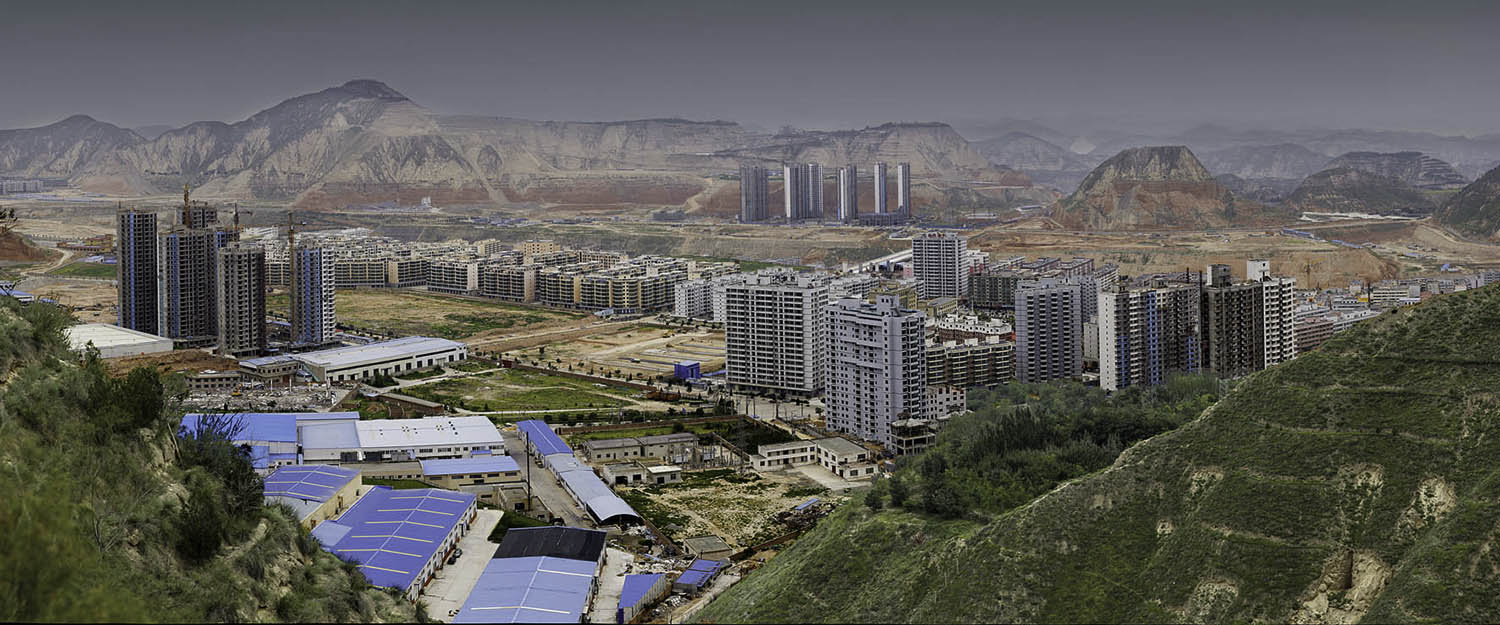
Scar-Removing Mountain for City II
Removing Mountain for City II, Lanzhou, Gansu, China
Jiuzhou Economic Development Zone is a product of removing mountain and filling valley in early 1990s. It developed by transferring land, building supportive infrastructure, and soliciting investment. Of the 7.78 km2 planning area, 8,972 mu are construction area to be developed. After more than 20 years of construction, land development has almost been finished, and total 1.3 million m2 houses have been completed. In recent years, a couple of landslides happened, and the most serious one happened in May 2009, which demolished 30 apartments of a residential building at the foot of a mountain, killed 7 and injured 1.

Scar-Solid Clay Brick Kiln
Solid Clay Brick Kiln, Shenmu, Shaanxi, China
Solid clay brick is a kind of red solid brick made by loess as the raw material and coal as the fuel. In China, materials for walls account for 70% of the total building materials for houses, of which clay bricks outweigh the other materials for walls. Clay used for solid brick is relatively good. Therefore, the practice has damaged our land resources. According to statistics, there are more than 900,000 brick and tile producers in China, covering 5 million mu of land. They produced about 600 billion bricks each year with 1.3 billion m3 clay. If the soil was dug to 3m deep in average, about 700,000 mu of lands were damaged each year. At the end of 1990s, Chinese Government banned the use of solid clay brick in some cities with a document. In 2010, the General Office of the State Council issued a document, calling an end to the use of solid clay brick in all cities across China by the end of 2010. Each year, 500,000 mu of farmlands were damaged due to clay brick production. Now the National Development and Reform Commission is further promoting the “ban of clay bricks” in cities and the “ban of solid bricks” in counties.